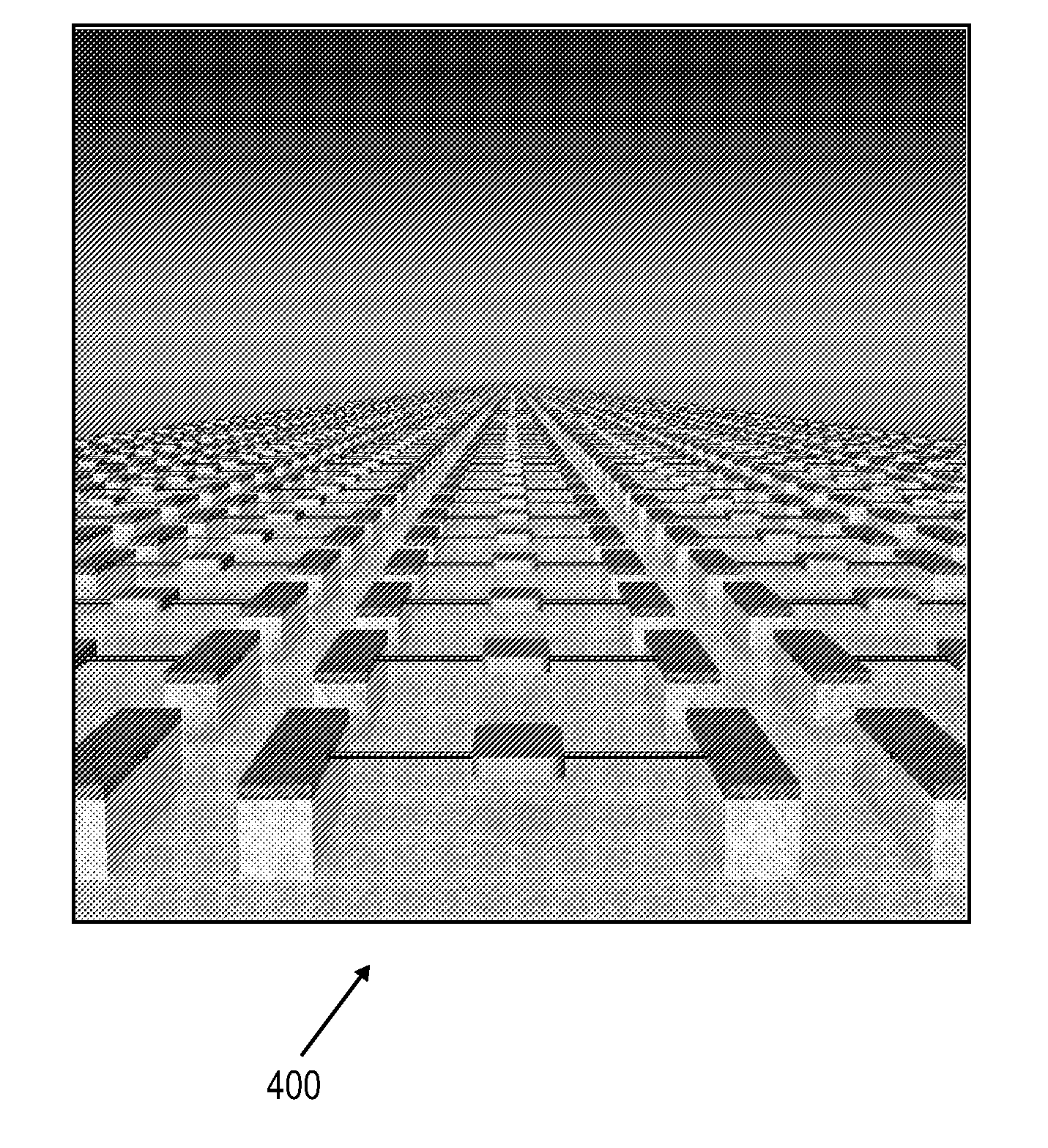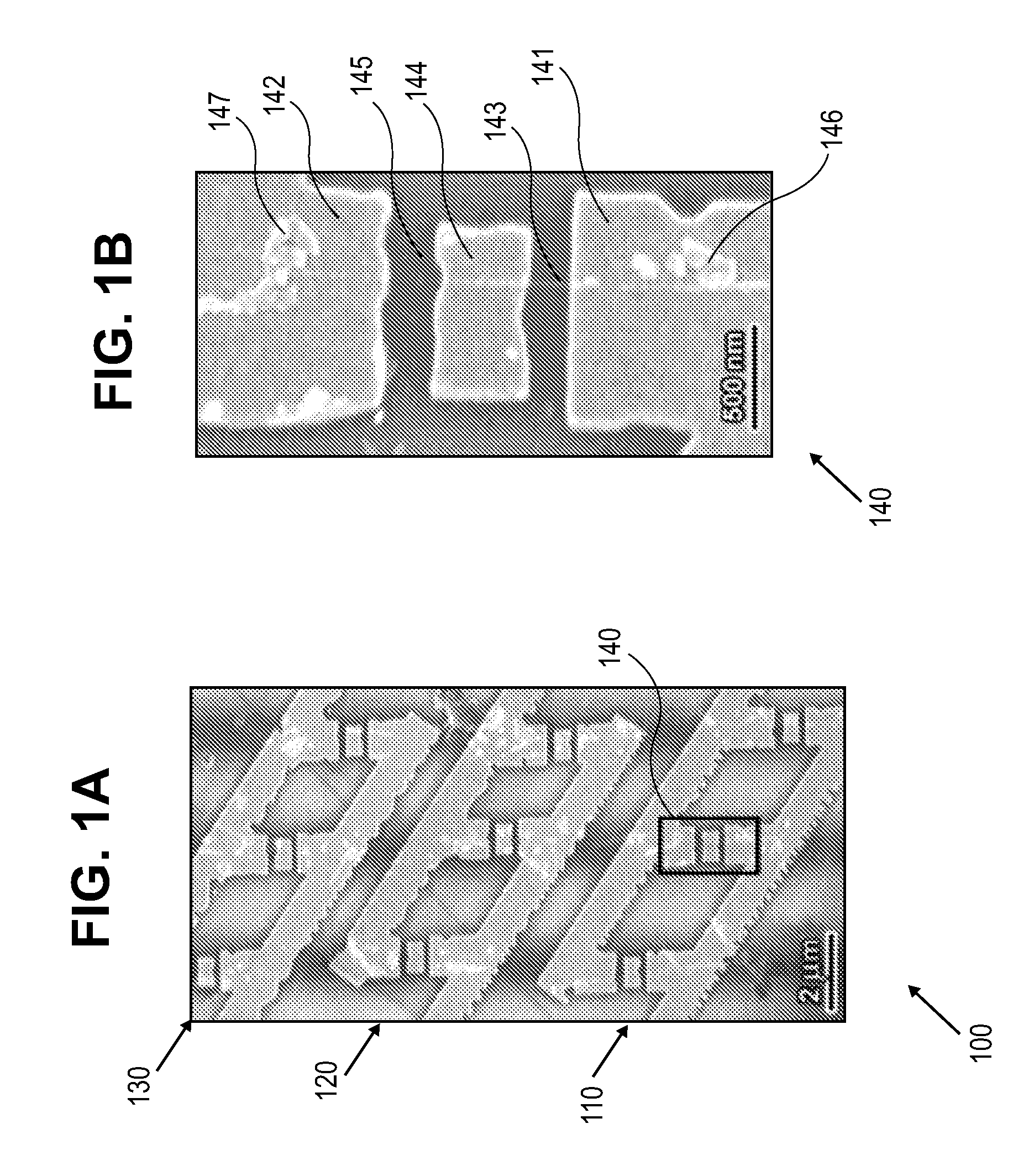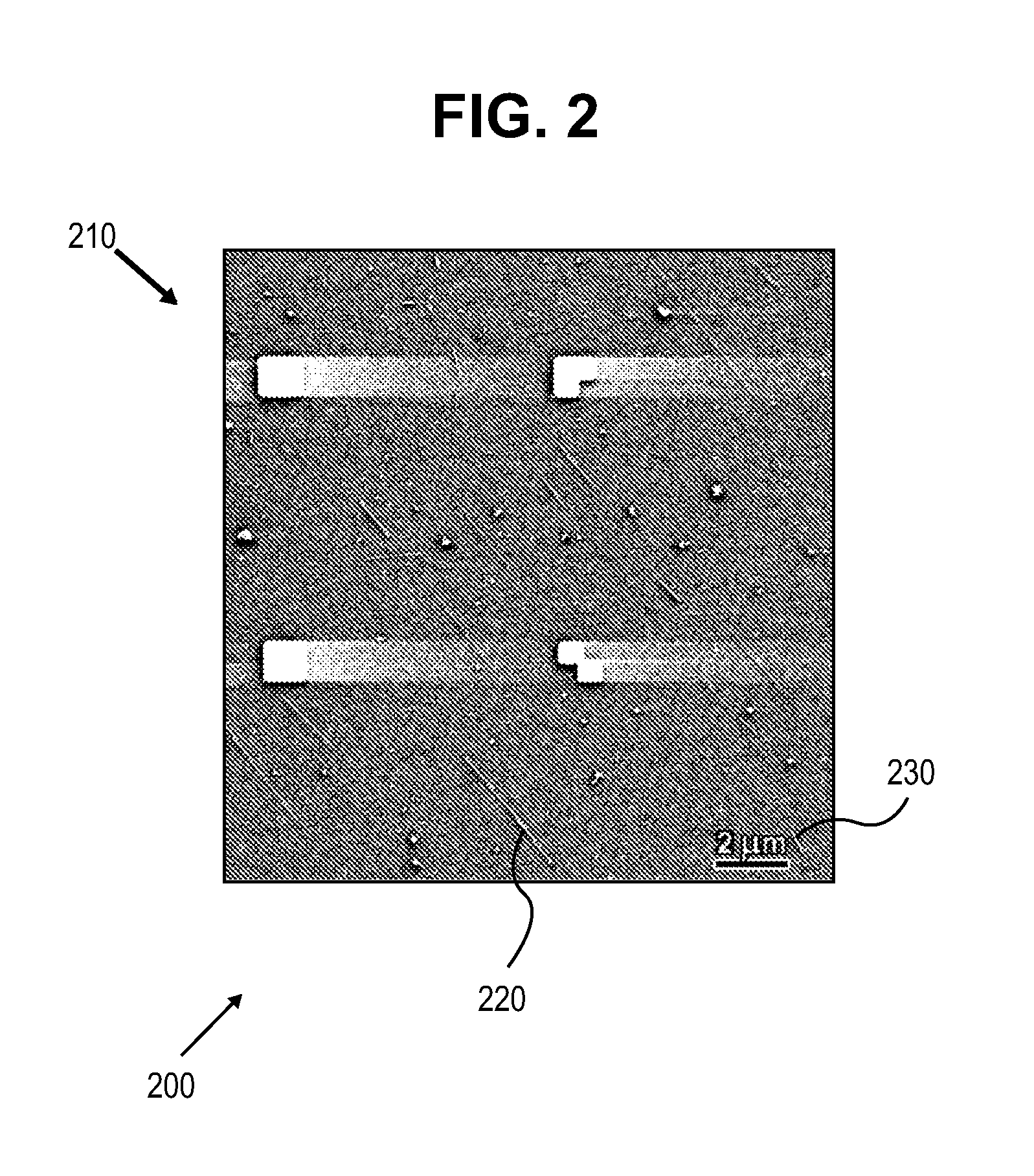Controlled Placement and Orientation of Nanostructures
a nanostructure and positioning technology, applied in the field of nanostructure positioning and orientation on substrates, can solve the problems of limiting compatibility with substrate materials or other system components, limiting chemistry, and unable to produce very high-quality multi-walled carbon nanotubes, etc., and achieve precise, yet complex positioning of nanostructures.
- Summary
- Abstract
- Description
- Claims
- Application Information
AI Technical Summary
Benefits of technology
Problems solved by technology
Method used
Image
Examples
Embodiment Construction
Definitions
[0037]Nanostructure means a nanoelectromechanical device that comprises one or more elements having at least one characteristic minimum dimension of less than or equal to 200 nm, and may be exemplified, without limitation, by components including one or more of: a nanotube; a nanowire; a nanorod; a noncrystalline or amorphous nanostructure; a nanocrystal; a supramolecular structure (i.e., a structure comprised of multiply-conjoined molecular and atomic units); a single walled carbon nanotube; a multiwalled carbon nanotube; a stripped (extendable) multiwalled carbon nanotube; a carbon nanowire; a carbon nanosheet; a carbon nanobelt; a carbon nanotube bundle; a boron-nitride nanotube; a silicon nanotube; a silicon nanobelt; a silicon nanowire; a compositionally modulated silicon nanowire; and a silicon nanosheets. Without limitation, some nanostructures act as nanomotors, nanomechanical resonators, nanobeam deflectors, sensors, actuators, device components, etc. Nanostruct...
PUM
| Property | Measurement | Unit |
|---|---|---|
| thickness | aaaaa | aaaaa |
| resonance frequencies | aaaaa | aaaaa |
| concentration | aaaaa | aaaaa |
Abstract
Description
Claims
Application Information
 Login to View More
Login to View More - R&D
- Intellectual Property
- Life Sciences
- Materials
- Tech Scout
- Unparalleled Data Quality
- Higher Quality Content
- 60% Fewer Hallucinations
Browse by: Latest US Patents, China's latest patents, Technical Efficacy Thesaurus, Application Domain, Technology Topic, Popular Technical Reports.
© 2025 PatSnap. All rights reserved.Legal|Privacy policy|Modern Slavery Act Transparency Statement|Sitemap|About US| Contact US: help@patsnap.com



